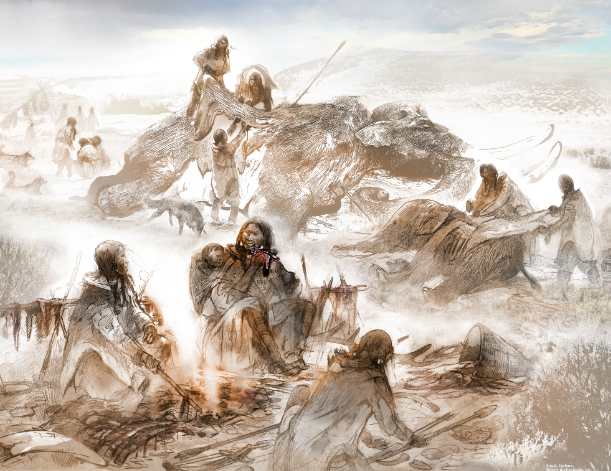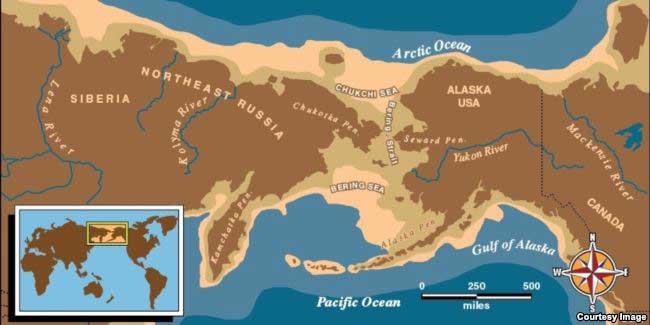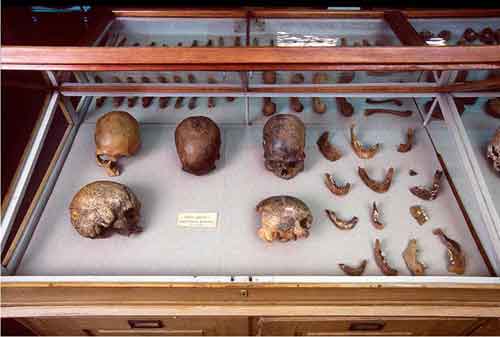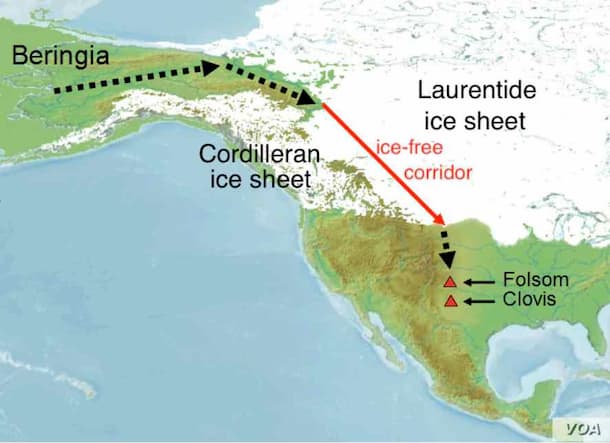Who were the first humans to enter the North American continent? Were they humans who founded what is known as the Clovis culture over 13,000 years ago? Or did other, totally unrelated peoples precede the Clovis immigrants?
This issue has been intensely, if not bitterly debated for decades. The Clovis culture has been seen as the cradle of North American indigenous culture. Now new international research shows that people of another culture and technology were present concurrently or even previous to those of Clovis. Scientists have added a new and dramatic chapter to the history of the peopling of the Americas striking a deadly blow to the “Clovis First” theory that has dominated pre-historic American archaeology for so long. The sensational results are published in the international journal Science.
Evidence that a non-Clovis culture was present in North America at least as early as Clovis people themselves and likely before is presented by an international team of researchers from the USA, the UK, and Denmark.
The team
Archeological excavations at the Paisley Caves in south-central Oregon were led by Dr. Dennis Jenkins from the University of Oregon.
Dr. Loren Davis of Oregon State University mapped the stratigraphy and studied the site formation processes.
Dr. Paula Campos and Professor Eske Willerslev from the Centre for GeoGenetics at the University of Copenhagen, Denmark, profiled the many DNA finds from the caves.
Dr. Thomas Stafford, Jr., also from Centre of GeoGenetics, was in charge of the radiocarbon geochronology and biogeochemistry.
|
|
The evidence
The evidence for a pre-13,000 year old non-Clovis culture in North America includes obsidian and chert artifacts known as Western Stemmed projectile points, and DNA-profiling of dried human excrement — more accurately known as coprolites. Both obsidian projectile points and coprolites were excavated from sediments in the Paisley Caves.
Previous investigations found that human coprolites in the caves predated the Clovis culture by over 1,000 years; however, critics questioned the interpretations by saying that the cave strata had not been sufficiently examined and that no Clovis-age stone tools had been found with the coprolites.
Critics also questioned whether or not younger DNA could have been washed down through the cave’s sediments, thereby contaminating non-human coprolites with more recent human DNA. If true, evidence for pre-Clovis human presence would have been bogus.
The new study refutes every one of the critics’ arguments and uses overwhelming archaeological, stratigraphic, DNA and radiocarbon evidence to conclusively state that humans — and ones totally unrelated to Clovis peoples — were present at Paisley Caves over a millennium before Clovis.
Rocking the theoretical boat
The new results severely contrast with the “Clovis First” theory for early peopling of the Americas. The Clovis First hypothesis states that no humans existed in the Americas prior to Clovis, which dates from 13,000 years ago, and that the distinct Clovis lithic technology is the mother technology of all other stone artifact types later occurring in the New World.
This theory has been predominant since the first evidence of human presence in America was found in 1932 at the Clovis type locality in Blackwater Draw, just outside the village of Clovis in New Mexico. But now this praised and respected foundation of American prehistory has been overthrown.
Dr. Jenkins says of the paradigm shifting results:
“One of the central questions has been whether the technological evolution of hunting tools such as dart and spearheads can be attributed solely to the Clovis culture and the knowledge that these people brought from the Old World. During our excavations in the Paisley Caves we’ve found a completely different type of dart points. But these new points are of a completely different construction from those found in the Clovis culture. As our radiocarbon dating shows, the new finds are as old, or possibly older than the Clovis finds, which proves that the Clovis culture cannot have been the ‘Mother technology’ for all other technologies in America. Our results show that America was colonized by multiple cultures at the same time. And some perhaps even earlier than Clovis.”
|
|
Human excreta rewrite history
It’s not the first time that the partners Dr. Jenkins from the US and Professor Willerslev from Denmark rewrite American prehistory.
In 2008, the two researchers presented a DNA-profiling’s and radiocarbon dating of coprolites moving the first human settlements in North America back in time by one thousand years, from 13,000 to 14,340 years ago. As if that was not enough, the team showed through DNA analysis of ancient human excrement that these people originated in Asia and were the probable predecessors of modern indigenous Americans.
With the new results the international team has added an important piece to the puzzle of who peopled the Americas — the final continent on Earth to be colonized by humans.
Professor Willerslev says of the new results:
“Our investigations constitute the final blow to the Clovis First theory. Culturally, biologically and chronologically the theory is no longer viable. The dissimilar stone artefacts, as well as the DNA-profiling of the human excrement, show that humans were present before Clovis and that another culture in North America was at least as old as the Clovis Culture itself. Or to put it differently: Either America was populated several thousand years before Clovis by people who created ‘mother’ technologies to the two very different styles of Clovis tools and Western Stemmed Tradition tools. Or else there must have been two earlier migrations into North America of which one must have predated the Clovis immigration by at least one thousand years. Both assumptions would explain our findings, but trying to distinguish which is more likely is very premature.”
Dr Paula Campos, a former postdoc at Willerslev’s lab in Copenhagen, now at Science Museum, University of Coimbra, Portugal, elaborates the point:
“When we published the first DNA results from the Paisley Caves four years ago it caused an outcry. Many archaeologists felt that our results must be wrong. They considered it an established fact that Clovis were the first Americans. People would come up with any number of alternative explanations to our data in order to repudiate our interpretation. Today we demonstrate that our conclusions were right.”
Thomas Stafford, also of the Centre for GeoGenetics in Copenhagen, and Loren Davies of Oregon State University agree:
|
|
“Critics said that the stratigraphy in the Paisley Caves is diffuse and chaotic and that this explains the finding of human coprolites older that Clovis. This couldn’t be more wrong. The stratigraphy is well developed, clear and ordered correctly top to bottom.”
Tom Stafford elaborates:
“No other archaeological site in the US has been as thoroughly and exhaustively dated as the Paisley Caves. We’ve completed more than 141 new radiocarbon measurements on materials ranging from coprolites to wood and plant artefacts, fossil plants and mummified animals, to unique, water soluble chemical fractions from sediments and the coprolites themselves. We have used 14C dating to physically and temporally dissect the Paisley Caves strata at the millimetre l level. At present, we see no evidence that geologically younger, water-borne molecules — DNA in particular — have moved downward and contaminated deeper, older coprolites. The aDNA and 14C data are iterative and corroborate each other. Our conclusion is that humans were present in North America at least one thousand years before Clovis and that these earlier peoples probably had no technological or genetic similarity to the iconic Clovis Culture. The Clovis First debate has ended. The theory is now dead and buried.”
Source: University of Copenhagen







